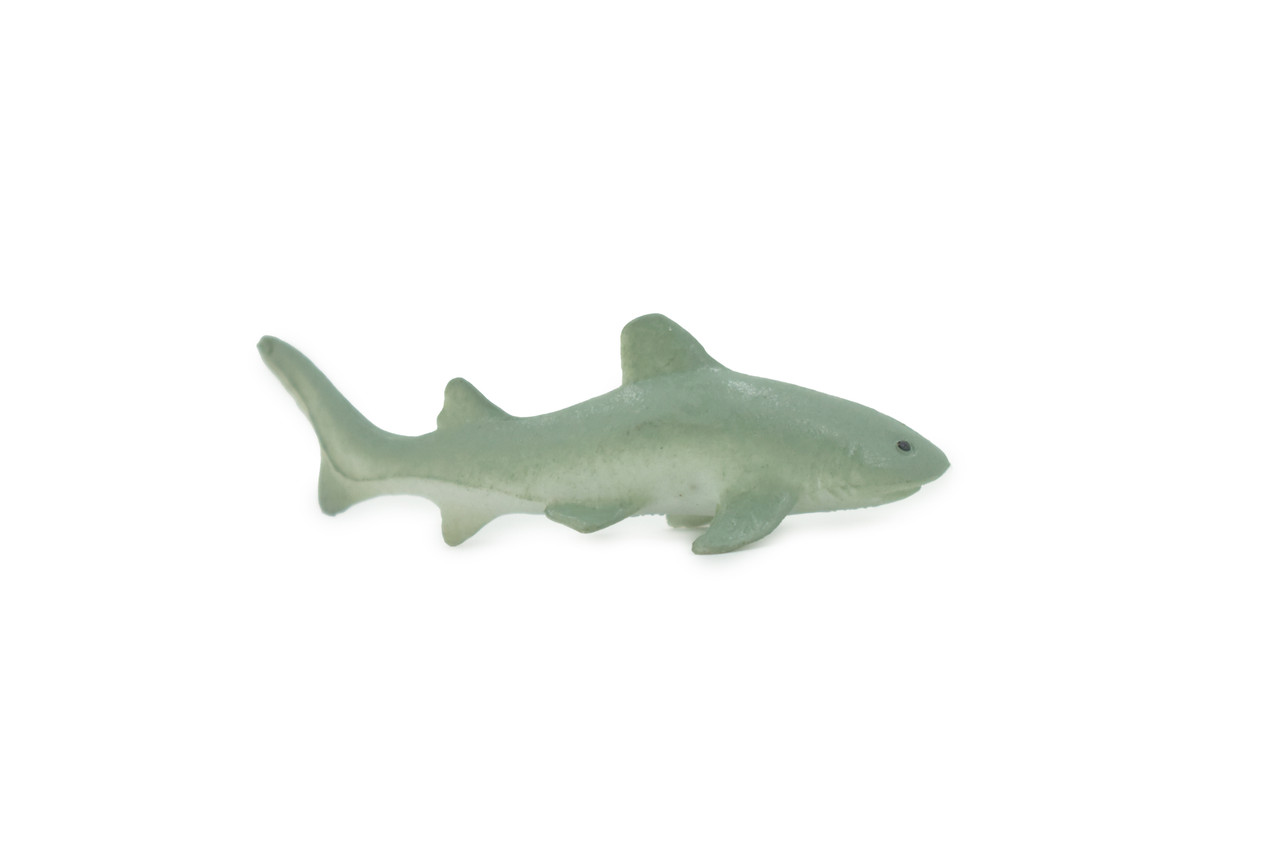Product Description
This Grey nurse shark, 3" figure includes hand painted features to give it realistic details that are true to natural anatomy. This figure is considered a high-quality replica. Highest Quality Natural Rubber.
One of the first shark species to be protected was the grey nurse shark (Carcharias taurus). The biology, distribution and conservation of this species are dealt with in the following paragraphs with a main focus on Australia as it was here it first became protected. The grey nurse shark, Carcharias taurus, also called the ragged-tooth shark, is an elasmobranch and belongs to the odontaspididae (ragged-tooth) shark family. It can easily be recognized by its characteristic conical snout and under hung jaw. Both jaws are laden with sharp, long and pointed teeth. The head is flattened and it has a large and stout body, which ranges up to 3.2 m and may weigh up to 300 kg. The body is grey to grey-brown dorsally and off-white on the belly. The juveniles (young sharks) usually have dark spots on the upper two-thirds of the body. The first and second dorsal fins are of similar size and the caudal fin is asymmetric. Once believed to be a man-eater, it is now known that this shark rarely attacks humans and if it does it is only in defense, or if it is baited. Sharks are the top predators in our oceans, and as such they are important for the marine ecosystems as important regulators of other species. They eat the weak, the old and the dead animals. The grey nurse sharks eat mainly lobsters, crabs, smaller sharks, fish, rays and squid. Grey nurse sharks live near the coast in sub-tropical to cool-temperate waters near most continental land masses (not found in the eastern Pacific Ocean off North and South America). They have a preference for some places resulting in an uneven distribution. For example, there are few grey nurse sharks found in north Australia while they are relatively abundant in the southern part of the eastern and western Australian waters. They are usually found swimming slowly, just above the sea floor, in sandy-bottomed gutters or in rocky underwater caves near inshore rocky reefs and islands. They can be found at depths ranging from 10 m (near the coastline) to 200 m (on the continental shelf). They are generally solitary but at times small schools of grey nurse sharks are found swimming and feeding together.
Thanks for visiting Collectible Wildlife Gifts, the leading provider of high-quality, lifelike animal Designs and gifts! We work hard to ensure we have a diverse range of products. Each product is inspected for their quality craftsmanship. Whether you're searching for a great gift or seeking educational designs for displays, we’ve got you covered.
At Collectible Wildlife Gifts, our products appeal to a wide range of customers, including family, friends, and educators. Our products are trusted and used by professional organizations as well including aquariums, zoos, and movie studios.
Our extensive line of products boasts everything from plush sharks to educational animal growth cycles. Our products bring joy to recipients, and serve as valuable educational resources, sparking curiosity and fostering learning.
Discover the wonders of the natural world with Collectible Wildlife Gifts. Browse our collection today!























